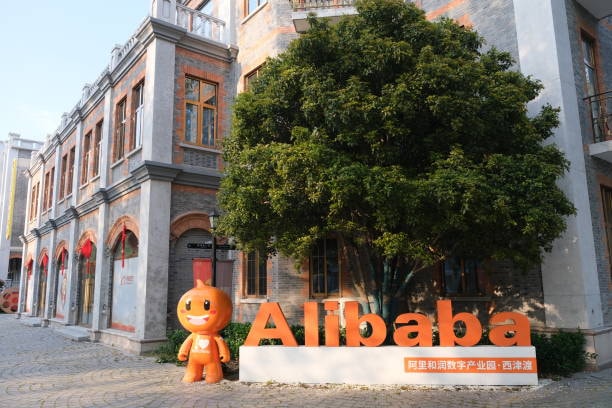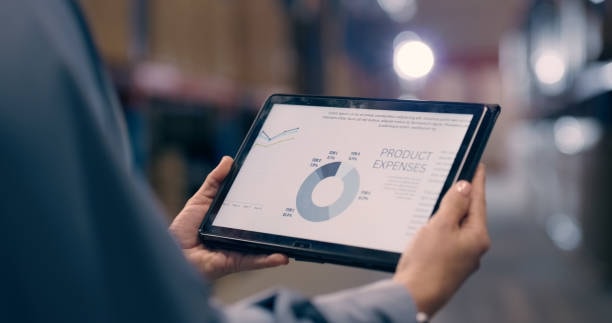
Meta Description: Unveil productive information about the cost of shipping in Alibaba, The influence of the rates, cost reduction tactics, and knowledgeable rules of freight forwarding in international marketplaces. Find out how to maximize your alibaba shipping cost now.
Alibaba has transformed the way people trade and has brought billions of dollars in global trade annually, since in its network, millions of buyers and suppliers interconnect and transact business with each other. Nevertheless, one of the most difficult and important issues a business should know when importing goods to China is the shipping costs. Whether you are interested in buying products in bulk or you have to sell on the Internet, it is a thorough guide to learn everything what you need to know about shipping from alibaba expenses to make the decisions related to your international business successful and increase the profitability and reduce the unknown costs that may appear.

GWT Worldwide is a Shanghai-based international freight-forwarding, supply chain, and cross-border e-commerce logistic expert, which is a subsidiary company in Shenzhen Guanwutong International Freight Forwarding Co., Ltd. (GWT). As professionals of air freight, sea freight, China-Europe railway transportation, global express, customs clearance, and Amazon FBA shipping, we offer businesses across the globe cost-effective, reliable services provided by a shipping agent that are delivered by advanced technologies and our global network of trusted partners.
Understanding Alibaba Shipping Fundamentals

Shipping costs in Alibaba involve many elements that will have a direct effect on how much you are spending to import goods and on general business profitability. These shipping fee charges differ vastly depending on various factors such as the mode of shipping chosen, the country where the ship is being delivered to, product characteristics, the restrictive demand at a particular time of the year, and other factors in the market. The knowledge of these fundamentals enables businesses to take strategic decisions in terms of accurate timing of purchases, selection of suppliers and overall inventory organization and control of competitive costs.
Types of Shipping Methods Available on Alibaba

The various methods of shipping have different structures of costs, time of delivery and services to fit the various needs of the business. Sea transportation has the benefit of the most affordable choice in large consignments constrained delivery schedules and air transportation to deliver isolated, and high-value commodities that require quick delivery and is considered the best shipping method . Express shipping, with door-to-door delivery, lots of tracking and smaller packages, urgent, is demanding service, and railway service can be an alternative in line of balance between costs and speed to transport between China and Europe.
Factors That Influence Alibaba Shipping Costs

There are various interacting variables which influence the shipping cost such as the size and weight calculations of the package, infrastructure and accessibility of the receiving country, selection of the shipping-method and level of shipping service, need of customs which may be a headache, the insurance coverage and risk analysis, seasonal requirements and shipping capacity, changes in the price of fuel and imposition of surcharges, congestion and effectiveness of the ports, fluctuations in the exchange rates and fluctuations in geopolitics on the route of trade. Knowledge of these factors can enable the buyers to anticipate and regulate their shipping costs, helping them to minimize alibaba shipping costs. in an efficient manner as they calculate a possible range of change in these costs by adopting appropriate strategies.
Sea Freight Shipping Costs from Alibaba

The most inexpensive shipping mode where there is flexibility in delivery time undertaken in large-volume orders is sea freight. The pricing of container shipping is influenced by the size offers it gives (20ft, 40ft, 40ft High Cube), the popular and frequent route, and the congestion level and efficiency in ports, fuel surcharges and operating costs of shipping, season capacity restriction as well as the choice of carriers. Different pricing structures can be considered with the Full Container Load (FCL) and the Less than Container Load (LCL) as it offers a better per-unit option with large shipments and LCL used to distribute the space in containers with small volumes.
Air Freight Shipping Costs Explained

Air freight costs a high price yet delivers much faster compared to other means to deliver products. The prices are based on dimensional weight which is calculated in industry standard rules and forms, fuel charges that vary with prevalent prices of aviation fuel, security charges required by aviation departments, charges per delivery point and charges imposed by the receiving aviation port security, cargo screening expenses, season variations of capacity and capacity inflexibility. Air freight is also more economical where speed of shipment is critical, where goods have high value that necessitate shorter introduction in the market, perishable goods that have low shelf life, and when shipment is on small quantities where time is more critical than the cost.
Express Shipping Options and Pricing

Such express carriers as DHL, FedEx, and UPS, TNT provide complete door-to-door services that have a high tracking level and scheduled delivery time. These courier companies services are priced on the basis of the dimensional weight calculations, the speed at which the package needs to be delivered (overnight to 3-days service), destination zones with different pricing tier, special handling needs of fragile items or items of high value, customs clearance services and value added services such as signature confirmation or customised insurance coverage. Express delivery is appropriate with small packages that need quick delivery, products of great value that need safe transportation and shipments that need timely delivery being the main concerns.
Railway Transport Between China and Europe

China-Europe railway transport especially by the means of Belt and Road Initiative infrastructure gives a cheaper yet reasonable and competitive transport solution in terms of not only reasonable time of transportation but also cost rates. This technique gives a relatively quicker delivery about the sea freight mode but it is more cost effective in terms of transportation costs. as compared to air freight mode of transportation to be used when transporting cargo of appropriate cargo types such as electronics, automotive parts, textiles and machinery components. Rail transportation has the advantage of rail-specific infrastructure, its low level of customs procedures since all documents are recorded in one record, and environmental friendliness.
Understanding Dimensional Weight Calculations

The trading of dimensional weight is important in managing of shipping costs particularly in light weight but high density commodities that occupy a lot of space in its cargo. Standardized dimensional weight rules are used by the carriers to allow chargeable weight to be based on the actual weight or dimensional weight and use a factor or constant length (), width (), and height () to arrive at dimensional weight which is then compared against actual weight and charged by whichever value is greater. This system of pricing guarantees that the carriers get reasonable reimbursement of cargo space utilisation and they also attract effective packaging habits among the shippers.
Port-to-Port vs Door-to-Door Shipping Costs

Port-to-port shipping is usually more affordable at the outset but it attracts some supplementary plans and expenses that are involved in land conveyance, customs clearing and often job last-minute conveyance plans. Door-to-door services encompass total logistics management of a supplier to the final destination and cover the shipping process. but with higher total costs as compared to the previous due to its all inclusive nature. Select according to the nature of your logistics capacity, your internal capacity to manage the import processes, cost sensitivity, and tolerance in dealing with several service providers.
Customs Clearance and Duty Considerations

Duties that must be paid are customs brokerage, duty according to the product classification ATC-C and to the country of origin, taxes including value added tax and other particular tax rates, document handling fee and costs of possible examination or inspection. These expenses differ greatly depending on the destination country and the classification of the product using harmonized system codes, the value of the shipment declared and the accuracy at which documents are filed. Well-prepared documentation with alibaba suppliers , its classification will minimize delays, extra expenses, and possible fines.
Insurance Costs for Alibaba Shipments

cargo insurance covers financial loss, transit-related loss, or damage through theft or other perils covered in the world. Insurance costs will ordinarily cost between 0.1-0.5 percent of the value of cargo depending on the type of coverage chosen, the nature of route risk assessment using the history of losses, the nature of cargo and its fragility, the adequacy of packaging, and choice of carrier among others. Deem that cargo insurance is necessary in case of valuable cargo, other goods that can be fragile, introduction of new business relations or cargo that is traveling thru a route with a greater risk profile.
Seasonal Variations in Shipping Costs
Seasonality of shipment is also price sensitive and depends on demand trends, weather elements at shipping routes, holiday effects on transportation facility and capacities at busiest peak seasons. Other significant seasonal swings involve disruption during Chinese New Year period, pre Christmas peak season premiums, summer holiday capacity cut-backs and harvest season movement of agricultural commodities. Assign stock keeping units and make shipment plans for shipping from china on the basis of such seasonal fluctuations to optimize the cost and scheduling of a reliable delivery of goods.
Fuel Surcharges and Additional Fees

Fuel surcharge is used by the carriers to adjust the cost of shipping as the prices of fuel in the international market fluctuates usually on a monthly or quarterly basis. Other charges would be security charges as may be stipulated by the government, peak season surcharges when there is high demand of the particular cargo, port congestion charges when there is delay in delivery, terminal handling fees, documents fees and special equipment fees. These express freight additional expenses may highly affect overall shipping cost, and they are to be considered during calculations of costs and negotiations.
Comparing Shipping Costs Across Different Suppliers
The shipping fees of different suppliers using Alibaba may vary with each supplier depending on the supply chain partners which have been established where contracts have been entered at and volume of ships were negotiated with shipping companies, contracted rates with freight forwarders, advantage of location, and ability to do packaging effectivity. Do not just look at the initial price of products but a total landed cost inclusive of all the fees and costs to compare between suppliers. To judge a supplier well, evaluate factors like supplier reliability, shipping experience, logistics capabilities, etc besides factors like cost.
How to Calculate Total Landed Costs

Total landed costs refer to total cost of buying a product, shipping cost of chosen method, insurance premium of shipping cargo, customs tariff duties as per classification of a product, any tax to be paid as duty and value added tax/ excise duty, customs brokerage charges, terminal handling charges, inland transportation cost, cost of storing and warehousing where necessary and any other cost of processing/handling. True product costs, reasonable pricing strategies, and profit margins can be calculated with a help of accurate calculation to make an informed business decision and stand a competitive position in the market.
Negotiating Better Shipping Rates with Suppliers
Good negotiation tactics are combining shipments to offer volume discounts, long-term business contracts to commit to volume, comparing quotes by different suppliers and shipping providers, high shipping volume offered on multiple orders to obtain discounted rates, and off-season times to negotiate with the suppliers, and reliability to the suppliers as a customer. Maintain a close relationship with suppliers by communicating regularly to save money , paying on time, and respecting each other to enjoy lasting cost benefits and priority treatment in case of services.
Volume Discounts and Shipping Economies
The larger volumes of shipment are eligible in most cases to achieve much lower shipping rates due to economy of scale of container usage, handling costs per container to overall shipping costs and carrier volume discounts levels. It is worth considering combining multiple orders into individual deliveries, coordinating with other buyers in terms of purchasing, placing more minimum orders in order to reach volume levels, or using the services of a freight forwarder that will be able to combine the shipments of multiple clients. The benefit of volume grows larger through containers and frequent shipment.
Regional Shipping Cost Variations
There is a great variation in the cost of shipping depending on the destination region because of the popularity and frequency of the trade lane, quality and efficiency of port infrastructure, competition on the market among carriers, economy and its trade relations, the level of its trade relationship with China, and its complexity and distance to major ports of China. Some of the most competitive routes and service frequencies are normally available on major trade routes such as China-US West Coast, China-Europe, and China-Southeast Asia, whereas the less trafficked destinations involving transshipments or specialized routings are normally not subject to competitive rates and frequency services.
Packaging Requirements and Cost Implications
Adequate packaging preserves the integrity of the cargo and maximizes computations of dimensional weight of the cargo and its handling. Look at the price of packaging materials and greenity, levels of protection suitable to the type of cargo and mode of transportation, efficiency in dimensions to reduce the weight that will be charged, international packaging standards, packaging marking and labeling to satisfy customs and handling as well as sustainability that is becoming increasingly significant to clients. Efficiency in packaging means cost savings in transporting goods and also, satisfaction of the shipment however, shipping regulations are met.
Tracking and Monitoring Shipment Costs
Put in place elaborate shipping performance measurement systems, cost analysis procedures, periodic supplier cost comparison, supplier logistics performance analysis, market rate trend analysis and historical cost data filing to cater to future plans. The frequent screening allows finding possibilities of cost optimization, anomalous charges or price variations, competitive shipping deals, as well as having statistics-based advice on strategic decision making.
Hidden Costs in Alibaba Shipping
However, take note that this may have some hidden costs that may greatly affect the total shipping costs such as terminal handling fees charges when shipping to a new location and at the point of destination, documentation charges, containers picking demurrage related charges, and storage charges when the container or package is in a storage facility under a long awaited stay, unexpected customs checks or inspection payments that may be incurred due to the missing information about a place of delivery address, residential delivery charges, and foreign- currency exchange charges. Include these contingencies to the cost estimates and establish budgets of contingencies that could have not been anticipated.
Payment Terms and Shipping Cost Impact
The various payment terms play a significant role in shipping arrangement and related charges by way of allocation of risks and distribution of responsibility. FOB (Free on Board) conditions require buyers to organize shipping, CIF (Cost, Insurance, and Freight) conditions puts the shipping costs in the supplier prices and DDP (Delivered Duty Paid) conditions passes the costs and risks to suppliers. Knowledge of Incoterms allows achieving more advantageous conditions of delivery, naming the cost burden, and preventing conflicts due to hidden payments or shipping concerns.
Working with Freight Forwarders
An added advantage offered by professional freight forwarders is specialized knowledge, the availability of better rates of carriers due to volume negotiations, they offer total logistic services such as customs clearance, and have the capability of risk management. They also deal with lengthy international paperwork, negotiate customs procedures, multi-modal transportation, cancillations, cargo monitoring, and communications, and in many cases may effect better shipping rates than can be negotiated by an individual shipper solely. Choose the forwarders according to the experience, service, geography and pricing clarity.
Technology Solutions for Cost Management
Use modern technology systems to compare rates on shipping across many different carriers and services, real-time tracking and reporting of shipment, automated cost tracking, cost analysis, supplier performance, and analytics in predicting costs. Digital solutions will bring transparency to all operations, make work more efficient with automation, make decisions driven by data, discover areas of optimization, and remove the need to complete manual administrative duties as well as minimize the chance of mistakes.
Compliance and Regulatory Considerations
Follow all the guidelines regarding import control, goods safety, documentation and licensing as well as the restricted goods or banned goods list. Failure to comply occurs at heavy penalties, delayed deliveries, seizures of cargoes, legal implications, and possible break in business relations. Keep abreast with any change in regulations on the products you are importing, keep proper records, deal with a competent custom broker and use compliance management systems that will ensure a continuous compliance with regulations.
Risk Management in International Shipping
Adopt and apply risk management strategies taking into consideration suitable cargo insurances, supplier diversification to prevent whole-source suppliers issues, assuring their transport continuity plans, financial risk evaluation, and associating concrete claims and responsibilities contracts. Proper risk management acts as a risk-guarding factor against unforeseen shipping costs and expenses., interruption of the supply chain, and losses that a business might incur besides maintaining continuity in operations despite the hard situations.
Sustainable Shipping Practices
Environ and sustainability are moving into the business as major concerns in shipping. Environmental solutions can provide economies by green shipment and carbon neutral schemes., fuel savings in optimum routing, fewer shipments saving on emissions, green logistics programs with regulatory incentives and environment-friendly packaging materials. Sustainability is now the competitive advantage coupled with the costs considered by many customers because they are focusing on environmentally responsible suppliers.
Currency Fluctuation Impact on Costs
The fluctuations of currency exchange rates have drastic impact on the shipping costs that are quoted in other currencies especially when one is signing a contract that covers a long duration of time. Taking hedging positions in order to reduce exposure to the currency risk, to enter into contract with currency adjustment terms, to watch the current trends of exchange rates to get the good time to move, and how various cost elements are impacted by the currency fluctuation. Good currency control can be used to stabilize prices and enhance predictability of finances.
Documentation Requirements and Costs
Effective cost management and ease of customs clearance all through the process of international shipping depends on proper documentation. The documents required are normally include extensive commercial invoices, extensive packing lists, certificates of origin, bills of lading or airway bills, and any special permits or certification of products types and regulations of the destination country. The preparation of a document, fees paid to the notary and possible correction costs should be included in the total shipping costs calculations.
Quality Control and Inspection Costs
Think of the need of quality control and pre-shipment inspection costs as a necessary element of the total costs of logistics that would enable avoiding much more costly problems later. Such services comprise debugging of supplier facilities, inspection of the product quality, assessment of conformity, loading test, and certification. However, in addition to the initial expenses, professional inspections also avert expensive recalls, risks of late delivery, product reliability challenges and liability cost which may be much higher than any inspection expenses.
Returns and Reverse Logistics Costs
Thoroughly plan the possible returns and reverse logistics expenses that may have immense effect to overall profits. Come up with proper returns policies and cost obligations to suppliers in advance of the order, be aware of the cost and process of international shipping of returns, and element in terms of the product security and replacement policies, and include reasonably possible cost of shipping the return product in price plans. The good returns management practice reduces the cost and keeps the customers and suppliers satisfied.
Consolidation Services and Cost Benefits
Consolidation services allow a number of orders to be grouped into a single shipment at a tip-top discount on a per-unit charge by making full use of container sizes and minimizing the number of handle. Applied to a multiple supplier, in the same geographic location, small frequent orders that are not worth a container load, and buyer who wants to optimize the shipping to lower the operating frequency, but also wants to keep the inventory level; this approach works most effectively. Other beneficial services that consolidation services usually offer are quality control and shipping coordination.
Warehouse and Storage Cost Considerations
Look at warehouse and storage expenses as part and parcel of in-depth inventory management practices. Include storage charges on long stays in the warehouse, operating charges on inventory management, carrying costs of inventory such as insurance, financing etc, and demurrage charges on delayed handling of shipments. Regarding distribution, strategic warehousing options and just in time inventory can make a difference in the landed costs and maintain availability of products and smooth supply chain.
Cross-Border E-commerce Shipping Solutions
E-commerce shipping services have specialized processes where the online selling is done e-commerce. Such services may comprise embedded custom predictability activities, automated tax collection and remit processes, adherence to marketplace demands, last-mile delivery setup, back-end handling, technology consolidation with online stores. Take such e-commerce shipping services specialized solutions due to their convenience and compliance advantage save alibaba shipping costs. even though they may be more expensive in unit terms.
Amazon FBA Shipping Considerations
Amazon FBA shipping is associated with strict requirements regarding labeling, packaging standards, scheduling of delivery appointments, and preparing the inventory in accordance with the standards. Consider the costs of FBA preparation such as labeling services, packaging requirements, storage costs in the Amazon facility, and fulfillment fees and even fines in case they fail to meet compliance. In many cases, cost effective services of professional FBA preparation companies can be more effective in terms of compliance and allow optimizing inventory management cheapest shipping method shipping price.
Multi-Modal Transportation Options
Multi-modal is the cooperation of multiple transportation types aimed at achieving the best cost and time balance in accordance with particular needs. Sea-air services, where delivery speeds match pure sea freight but are faster than air freight, but at cheaper costs than air freight offer, rail-truck combinations to inland destinations or other innovative multi-modal combinations air or sea freight. These methods are high in terms of logistics arrangement but can have major benefits in appropriate cargo across appropriate destinations.
Dangerous Goods Shipping Costs
Harmful commodities need special handling, vast documentation, certification of packs and mode of transportation to be of standards that are highly regulated internationally. The additional costs of regulatory compliance, the required safety equipment and procedures, special training needs, limited routing and increased insurance cover impose huge additional expense to these shipments shipping insurance. Consider the costs of classification of the material, certification of the packages ocean shipping, and handling increase together with possible delays caused by compliance with regulations when exporting hazardous materials average shipping costs.
Temperature-Controlled Shipping Expenses
Quantities of temperature-sensitive products also need refrigerated containers, special handling routes, organized surveillance mechanisms, as well as back up power structures, at a very high shipping costs. Considering the cost of equipment rent, associated monitoring and tracking technology expenses, handling charges, prospective damage insurance as also the required distributions of delivery logistics reduce alibaba shipping costs. Think about integrated temperature-controlled services and efficient packaging as a result of which it will be possible to optimize the costs and ensure that the product of a cold chain is not spoilt.
Project Cargo and Oversized Shipment Costs
The bigger or project cargo needs customized equipment to handle it and specific documentation, surveys of the route to be used and in many cases, special transportation arrangements. Such shipments often require special engineering resolution, heavy-lift gear, vehicles, road passes and planning with various authorities. Premium pricing correlates with the needs of specialized equipment, low efficiency of cargo space, difficult handling, and possible exclusive possession of the transport resources.
Import Regulations and Compliance Costs
The import rules vary in different countries, which make a huge impact on the shipping rates because of the requirements that have to be met, the number of documents to fill in, the nature of inspection, and the possibility of delays. Be aware of new regulations of your products, which products you should be licensed to sell, label or mark requirements, lists of banned or restricted products and the advantages of joining trade agreements. There are compliance costs such as preparation of documentation, cost of certification and possible costs of violation.
Shipping Cost Optimization Strategies
Practice extensive optimization techniques such as analysis of systematic route optimization, continuous carrier rate bidding, consolidation opportunity analysis, flexibility quotes deliveries of better rates, packaging effectiveness and the continual monitoring of market rates. To maintain the success of optimization, a company should be open to constant review, flexible to change strategies according to the data on performance, and willing to build relationships over the long-term with the logistics partners to provide long-term cost benefits.
Technology Integration for Cost Control
Combine shipping management system with wider business functions to improve control of expenses and operation visibility. Automation minimizes human errors, allows real-time cost monitoring, offers predictive insights to plan in advance, allows keeping track of supplier performance and offers in-depth reporting that supports strategic decision making. Integration of technology enhances efficiency, as well as offering data-based insights to be constantly improved.
Supplier Relationship Management
Contract good mutually rewarding relationships with suppliers and logistics partners to obtain favorable rates, special treatment in the provision of services, and joint problem solution. Long term relationships can lead to volume-based discounts, discourse on time payments, priority on allocations of capacity in peak-time and improvement on the quality of service. Build relationships by regular communication, making payments in a good time and respecting each other as a sustainable competitive advantage.
Performance Metrics and KPIs
Establish major performance indicators of managing shipping costs such as the analysis of costs before, during, and after shipping, on transit performance rates, cargo damage rates, supplier performance measures, and carriers performance service measures. Monitoring on regular basis helps in the process of perpetual identification of improvement, performance trending, supplier accountability and cost-effective decision making through data.
Future Trends in Alibaba Shipping Costs
Be aware of industry trends that are likely to have a substantial impact on shipping expenses such as initiatives to change their digital environment, technology to automate their operations and cut down on labor costs, sustainability requirements and the demands placed on the routes they use as well as the equipment they employ compatible with such requirements, geopolitical developments that can change the way they conduct their trade, and capacity management solutions. Projection of trends assists in strategy formulation, sourcing of providers and logistics planning to sustain competitive advantages in the changing markets.
Cost Comparison Tools and Resources
Take advantage of state-of-the-art on-line communication and materials that facilitate an evaluation of shipping expenses on several possibilities, carriers, and package levels. Those digital platforms make prices transparent, allow comparing the rates in real-time, analyze the cost history, and find the most cost-efficient means to meet certain needs. Constant comparison tools will result in competitive prices and unearthing of the available market opportunities of cost reduction.
Emergency Shipping and Rush Order Costs
Emergency shipping requirements and the costs that accompany it are what must be planned out in some systematic manner that can cause serious negative consequences to the profitability unless controlled in a structured manner. Enter contingency agreements with favorite suppliers, have contacts with express carriers in case of immediate demand, know high premiums in respect of speed orders, keep emergency shipping capabilities into award pricing. Such planning also reduces emergency cases although with an assurance of being able to respond to emergency cases when there are needs.
Shipping Cost Budgeting and Forecasting
Design detailed budgeting and forecasting systems of banking expenses, including past trading figures, analysis of seasonality, assessment of market dynamics, expansion of volumes, and possible disruption prices. With proper forecasting, cash flow management, formulation of prices, negotiations with suppliers and any other business strategic planning such as expansion of a business to new markets whilst ensuring cost competitiveness within a targeted market can be better handled.
Regional Trade Agreements Impact
Learn the implications of regional trade agreements to shipping costs due to low tariff regimes, ease in customs clearance, enhancement of trade facilitation measures and preferential treatment arrangements. Take advantage of these agreements by determining what is needed to qualify, where the origin needs to be, the paperwork that is needed and certification procedures. When utilized correctly, trade agreements are capable of offering considerable cost savings to the businesses as well as competitive advantages.
Digital Transformation in Shipping
Seize the digital transformation chance through such things as blockchain documentation to promote protection and transparency, the use of IoT to monitor shipping, the use of AI-driven optimization algorithms to optimize routes and costs, and the implementation of automated customs controls. Such technologies have the capacity to considerably save costs and enhance the service quality, minimize errors, increase transparency, and gain competitive advantages due to high efficiency of operations.
Environmental Regulations and Green Shipping
Take into account environmental regulations and green shipment as those aspects that grow in significance as cost- and market-entry factors. Environmental standards would require extra investments in the short term, yet they can lead to competitive outcomes of regulations, customer service, and possible work incentives. The green shipping initiatives tend to bring long term operational efficiencies and cost savings as well as contribute to sustainability objectives.
Supply Chain Resilience and Cost Impact
Attach resilient supply chains that trade off cost effectiveness and risk reduction measures by diversifying strategies, secondary supplier development, alternate routes and contingency plans. Although diversification strategies might not bring about any cost-saving in the short run, they offer the much-needed insurance against shocks that are bound to lead to far more significant costs, lost revenues, and customer dissatisfaction. Resilience investments are supposed to be considered as insurance against the weaknesses in the supply chain.
Conclusion
The shipping cost at Alibaba deals with a range of intertwined factors, and different shipping operations, optimization, and market dynamics based on which the success of trading relations in the international environment strongly depends. Effective cost management means a good combination of strategies, good relationship with the suppliers and other logistic partners, constant search of market conditions and performance measures, and responsiveness to the changes in the industry trend and technologies. With the adoption of the thorough planning suggested in this complete guide, businesses can experience considerable cuts in their shipping costs without slackening the quality of service they offer, within the limits of legal and regulatory compliance and can establish competitive advantages in the international markets.


Thank you for reading!
Have questions, corrections, or better ideas? We’d love to hear from you!
We value every piece of feedback and promise to reply within 24 hours. Let's make this guide better together!
Note: Spam comments will not be published.